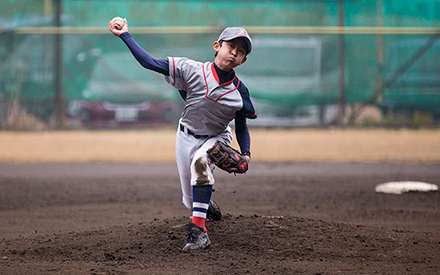
The months following the birth of a child are some of the most rewarding for new parents. They also are the most challenging to a new parent's body. Suddenly, lifting and carrying a child, picking up toys from the floor, and pushing a stroller become routine daily tasks. But these activities can result in new aches and pains (such as low back pain) from improper mechanics while doing things more often than you were used to.
Here are some tips on how to use proper body mechanics to help ease the strains and stresses of parenting:
1. Lifting Your Child From the Floor
When picking up your child from the floor, you should use a half-kneel lift:
First, stand close to your child on the floor. While keeping your back straight, place one foot slightly forward of the other foot, and bend your hips and knees to lower yourself onto one knee. Once on the floor, grasp your child with both arms and hold them close to your body. Tighten your stomach muscles as you exhale, push with your legs, and slowly return to standing.
The same half-kneel technique should be used to place your child on the floor.
2. Carrying and Holding Your Child
When holding or carrying your child, always keep them close to your body and near your center. Avoid carrying your child with just one arm, balanced on your hip. When using a child carrier, keep your back straight and your shoulders back to avoid straining your back and neck.
3. Picking up Toys From the Floor
Keep your head and back straight, bend at your hips, and extend one leg off the floor straight behind you. You can also use the half-kneel technique discussed above to pick up several toys within the same space.
4. Lifting Your Child Out of the Crib
As you lift your child from the crib, keep your feet shoulder-width apart and your knees slightly bent. Arch your lower back and bend at your hips while keeping your head up. With both arms, grasp your child and hold them close to your chest. Straighten your hips so you are upright, then straighten your knees to return to a full stand.
Use the same technique to return your child to the crib, and always remember to keep your child close to your chest.
5. The Stroller
When lifting your child from a stroller, stand directly in front of the child to avoid twisting your back. It is important to bend at your hips rather than from your lower back, much like rising from a squatting position.
When walking your child in a stroller, you will want to stay as close to the stroller as possible, allowing your back to remain straight and your shoulders back. The force to push the stroller should come from your entire body, not just your arms. Avoid pushing the stroller too far from you, which will cause you to hunch your back and round your shoulders forward.
6. The Changing Table
When placing the baby on the changing table, keeping them at the center of your body is essential. The table should be at the appropriate height for parental use. The best table placement and height for diaper changing is directly in front of and slightly below your elbows. This helps avoid the type of bending and twisting that can cause injury.
Other tips
- Place all diaper-changing materials within arm's reach, such as in a wide set of drawers directly below the changing area.
- You may wish to place one leg on a stool when using the changing table. This can help take the strain off your back and neck.
If you develop aches and pains as a new parent, a physical therapist can evaluate you and design a treatment plan to address your specific problems.
Physical therapists are movement experts. They improve quality of life through hands-on care, patient education, and prescribed movement. You can contact a physical therapist directly for an evaluation. To find a physical therapist in your area, visit Find a PT.


